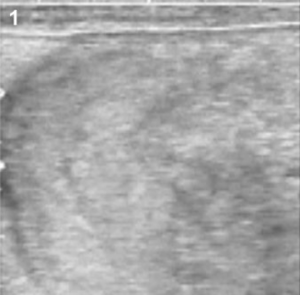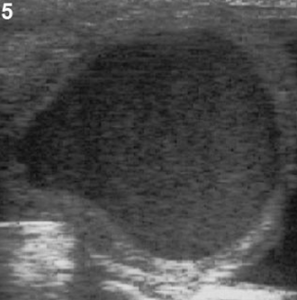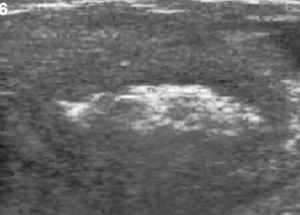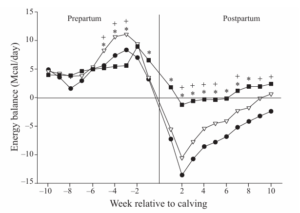REPRODUCTIVE MANAGEMENT IN COMMERCIAL POST PARTUM DAIRY COWS
- Nagendra Reddy1 and G Shalini
Ph.D Scholar, Department of Animal Reproduction, Gynaecology and Obstetrics, CVAS, Mannuthy, Thrissur, Kerala
Corresponding author mail id: nagendrareddyy93@gmail.com
- INTRODUCTION:
Post Partum dairy cow management is crucial in a commercial dairy farm. Managemental Changes include dramatic increase in technologies for dairy cow reproductive performance and significant increase in herd / farm size. Enhanced milk production and reproductive performance are two important determinants of dairy cow profitability. Over the past few decades, there has been a significant rise in milk production per dairy cow but the dairy cow reproductive performance has decreased globally (Royal et al., 2000). Energy balance correlates with first post-partum ovulation during the first 3–4 weeks post-partum (Lucy et al., 1991). Resumption of early ovarian activity is important to increase fertility as the number of oestrous cycles prior to breeding increases (Thatcher and Wilcox 1973). Heat-stressed dairy cattle exhibit a unique metabolic status that likely contributes to the reduction in fertility. Potential opportunities during heat stress vary greatly and include feed additives, targeted cooling, genetic selection, embryo transfer and potentially crossbreeding can improve the management of dairy cattle. Traditionally, the main diagnostic methods used for reproductive control in cattle are rectal examination, inspection of vaginal discharge and vaginoscopy but nowadays use of ultrasonography (US) has become a common diagnostic method due to smaller size and portable equipment, high image quality. Ultrasonography improves accuracy in the diagnosis of stages of the oestrous cycle, ovarian and uterine pathologies, and pregnancy diagnosis and it also facilitates the diagnosis of alterations during pregnancy (embryo mortality, foetal malformations, etc.) and helps determining foetal sex from day 55 of pregnancy. So present topic focusses mainly on the three important areas that needs to be taken care especially in a post parturient dairy cattle are dry period management, hormonal treatments and ultrasonography.
- Role of Dry Period on Reproduction:
Dry period (DP) between lactations is necessary to achieve maximum milk production. To maximise milk yield during the ensuing lactation a two-month dry phase is required (Sorensen and Enevoldsen 1991). Intake of dry matter drastically drops the week before parturition (Bertics et al., 1992), resulting in a decrease in energy intake at a critical point of time.
Fig. 1: Scatter plot of days dry and days from calving to first post-partum ovulation for cows with a traditional (56 days) dry period (T), a shortened (28 days) dry period (S) or no planned dry period (N) (Gumen et al., 2005)
Fig 2: Dry matter intake(kg⁄day) of cows with different dry period lengths. N( )): no dry period, S (Δ): shortened dry period(o): traditional dry period (Rastani et al., 2005)
Fig.3. Energy balance (Mcal⁄day) of cows with different dry period lengths. N( )): no dry period, S (Δ): shortened dry period(o): traditional dry period (Rastani et al., 2005)
Fig 4: Model of the effect of shortening the dry period on fertility
Thus, shortening the dry period could be used as a management practice for achieving better reproduction in dairy cows.
- Hormonal Treatments to Improve Fertility During the Early Post-Partum Period:
GnRH and prostaglandins used widely to manage the post-partum period i.e. to induce the reproductive cycle and improve uterine health in lactating dairy cows.
| Study | Synchronization protocol | Number of cows | Mean DIM | Percentage of pregnancy per AI |
| Moreira et al. (2001) (all cows) | Ov synch
Presynch-Ovsynch (Presynch-12)
|
97
88 |
At 37
At 37 |
36
36.9 |
| Moreira et al. (2001) (only cyclic cows) | Ovsynch
Presynch-Ovsynch(Presynch-12) |
67
66 |
At 37 | 34.4
46.9 |
| Peters and Pursley (2002) | Ovsynch | 209 | At 49-55 | 38.3 |
| Souza et al. (2008) | Presynch-Ovsynch
Double-Ovsynch |
180
157 |
42 | 41.7
49.7 |
Table1. Comparison of several synchronization protocols: synchronization protocol types, number of cows used, mean DIM to begin protocols and percentage of pregnancy per artificial insemination (AI)
- Reproductive Challenges During Heat Stress:
Impaired fertility during periods of heat stress is the combination of several consequences of heat stress ranging from reduced oestrus detection rates and altered follicular function to early embryonic death (Table 2). The detrimental effects of heat stress on fertility are multiplied in production systems. Although heat stress often does not affect libido but it is known to decrease sperm concentration, lower sperm motility, and increase the percentage of morphologically abnormal sperm in an ejaculate (Rahman et al., 2018)
Table 2. Negative effects of heat stress on dairy cow fertility
| Reproductive challenge | Reference |
| Lower oestrus detection rates | Collier et al. (1982a) |
| Reduced ovarian follicle size | Schüller et al. (2017) |
| Altered follicle fluid composition combined with abnormal ovarian steroid concentrations | Roth and Wolfenson (2016) |
| Altered location, morphology, and organelle function in oocytes | Maya-Soriano et al. (2013) |
| Decreased sperm concentration and motility, and increased morphological abnormalities | Rahman et al. (2018) |
| Early embryonic death | Putney et al. (1988) |
Table 3. Feed additives that improve the reproductive performance of heat-stressed dairy cows
| Supplements and their benefits | Reference |
| Melatonin
Decreased days open and first-trimester pregnancy loss Increased uterine blood flow |
Brockus et al. (2016) |
| Chromium
Improved immune system, and decreased body temperature and hyperinsulinemia Increased pregnancy rates within the first 28 d of breeding period |
Leiva et al. (2017) |
| Methionine
Increased mammary gland health, improved ovarian function, and shorter calving interval |
Batistel et al. (2017) |
| Folate Improved
Total milk production Increased germ cell viability and embryo survival |
Koyama et al. (2012) |
Table 4. Cow management and potential positive effects on cow fertility after cooling
| Potential benefits for cooled cows | Reference |
| Heifers
Improved summer pregnancy rates |
Moghaddam et al. (2009) |
| Periconception cows
Lower rectal temperatures and respiration rates, increased milk production and DMI |
Ortiz et al. (2015) |
| Late-gestation (dry) cows
Increased milk production, improved colostrum quality and calving-related health disorders |
Avendaño-Reyes et al. (2010) |
| Offspring from late-gestation cooled cows Increased birth weight | Avendaño-Reyes et al. (2010) |
| Postpartum cows
Improved ovarian characteristics, including increased dominant follicle and corpus luteum diameter and percentage of ovaries with corpus lutea |
Avendaño-Reyes et al. (2010) |
- ULTRASONOGTRAPHY:
The exploration of the uterus in the non-pregnant female aims to either determine the stage of the oestrous the uterus (Beal et al., 1992). The histology of the uterus determines its echogenicity as the submucosa can be visualized as an anechoic layer beneath the endometrium. During the follicular phase, under the influence of oestrogens, the blood vessels in the submucosa become hyperaemic, the endometrium becomes oedematous, increasing its thickness, and the anechoic vascular zone is more easily visualized. The content of the uterine lumen may also vary during the oestrous cycle, being typically absent during the luteal phase, whereas a small amount of fluid may be present during the follicular phase (Barlund et al., 2008). Apart from the oestrus phase various pathologies and pregnancy status can also be visualised through ultrasonography (Fig: 5)

Luteal Phase |

Estrus phase |

Estrus phase |

Mucometra |

Mucopurulent Endometritis |

Purulent Endometritis |

Follicular cyst |

Luteal cyst |
Fig 5: Different stages of uterus and ovaries (Quintela et al., 2012)
- Conclusion:
In the post-partum dairy cows, it is important to reduce the dry period along with the regaining of earlier post-partum ovarian activity with the synchronization protocols and diagnosis of the pathological conditions of the ovaries and uterus through ultrasonography and appropriate treatment to the animals for enhancing milk production and thereby improving the reproductive efficiency in dairy animals.
- References:
Avendaño-Reyes, L., J. W. Fuquay, R. B. Moore, Z. Liu, B. L. Clark, and C. Vierhout. 2010. Relationship between accumulated heat stress during the dry period, body condition score, and repro duction parameters of Holstein cows in tropical conditions. Trop. Anim. Health Prod. 42:265–273.
Barlund CS, Carruthers TD, Waldner CL, Palmer CW, 2008: A comparison of diagnostic techniques for postpartum endometritis in dairy cattle. Theriogenology 69, 714–723.
Batistel, F., J. M. Arroyo, A. Bellingeri, L. Wang, B. Saremi, C. Parys, E. Trevisi, F. C. Cardoso, and J. J. Loor. 2017. Ethyl-cellulose rumen-protected methionine enhances performance during the peri-parturient period and early lactation in Holstein dairy cows. J. Dairy Sci. 100:7455–7467.
Beal WE, Perry RC, Corah LR, 1992: The use of ultrasound in monitoring reproductive physiology of beef cattle. J Anim Sci 70, 924–929.
Bertics SJ, Grummer RR, Cadorniga-Valino C, Stoddard EE, 1992: Effect of prepartum dry matter intake on liver triglyceride concentration and early lactation. J Dairy Sci 75, 1914–1922.
Brockus, K. E., C. G. Hart, C. L. Gilfeather, B. O. Fleming, and C. O. Lemley. 2016. Dietary melatonin alters uterine artery hemodynamics in pregnant Holstein heifers. Domest. Anim. Endocrinol. 55:1–10.
Collier, R. J., D. K. Beede, W. W. Thatcher, L. A. Israel, and C. J. Wilcox. 1982a. Influences of environment and its modification on dairy animal health and production. J. Dairy Sci. 65:2213–2227.
Gumen A, Rastani RR, Grummer RR, Wiltbank MC, 2005: Reduced dry periods and varying prepartum diets alter postpartum ovulation and reproductive measures. J Dairy Sci 88, 2401–2411.
Koyama, H., S. Ikeda, M. Sugimoto, and S. Kume. 2012. Effects of fo lic acid on the development and oxidative stress of mouse embryos exposed to heat stress. Reprod. Domest. Anim. 47:921–927.
Leiva, T., R. F. Cooke, A. P. Brandao, U. Pardelli, R. O. Rodrigues, F. N. Corra, and J. L. Vasconcelos. 2017. Effects of concentrate type and chromium propionate on insulin sensitivity, productive and reproductive parameters of lactating dairy cows consuming excessive energy. Animal 11:436–444.
Lucy MC, Staples CR, Michel FM, Thatcher WW, 1991: Energy balance and size and number of ovarian follicles detected by ultrasonography in early postpartum dairy cows. J Dairy Sci 74, 473–482.
Maya-Soriano, M. J., F. Lopez-Gatius, C. Andreu-Vazquez, and M. Lopez-Bejar. 2013. Bovine oocytes show a higher tolerance to heat shock in the warm compared with the cold season of the year. Theriogenology 79:299–305.
Moghaddam, A., I. Karimi, and M. Pooyanmehr. 2009. Effects of short-term cooling on pregnancy rate of dairy heifers under summer heat stress. Vet. Res. Commun. 33:567–575.
Moreira F, Orlandi C, Risco CA, Mattos R, Lopes F, Thatcher WW, 2001: Effects of pre-synchronization and bovine somatotropin on pregnancy rates to timed artificial insemination protocol in lactating dairy cows. J Dairy Sci 84, 1646–1659.
Ortiz, X. A., J. F. Smith, F. Rojano, C. Y. Choi, J. Bruer, T. Steele, N. Schuring, J. Allen, and R. J. Collier. 2015. Evaluation of conductive cooling of lactating dairy cows under controlled environ mental conditions. J. Dairy Sci. 98:1759–1771.
Peters MW, Pursley JR, 2002: Fertility of lactating dairy cows treated with Ovsynch after pre synchronization injections of PGF(2alpha) and GnRH. J Dairy Sci 85, 2403–2406.
Putney, D. J., J. R. Malayer, T. S. Gross, W. W. Thatcher, P. J. Hansen, and M. Drost. 1988. Heat stress-induced alterations in the synthesis and secretion of proteins and prostaglandins by cultured bovine conceptuses and uterine endometrium. Biol. Reprod. 39:717–728.
Quintela, L. A., Barrio, M., Peña, A. I., Becerra, J. J., Cainzos, J., Herradón, P. G., & Díaz, C. (2012). Use of ultrasound in the reproductive management of dairy cattle. Reprod. Domest. anim, 47, 34-44.
Rahman, M. B., K. Schellander, N. L. Luceno, and A. Van Soom. 2018. Heat stress responses in spermatozoa: Mechanisms and con sequences for cattle fertility. Theriogenology 113:102–112.
Rastani RR, Grummer RR, Bertics SJ, Gumen A, Wiltbank MC, Mashek DG, Schwab MC, 2005: Reducing dry period length to simplify feeding transition cows: milk production, energy balance and metabolic profiles. J Dairy Sci 88, 1004–1014.
Roth, Z., and D. Wolfenson. 2016. Comparing the effects of heat stress and mastitis on ovarian function in lactating cows: basic and ap plied aspects. Domest. Anim. Endocrinol. 56(Suppl): S218–S227.
Royal MD, Darwash AO, Flint APF, Webb R, Woolliaams JA, Lamming GE, 2000: Declining fertility in dairy cattle: changes in traditional and endocrine parameters of fertility. Anim Sci 70, 487 502.
Schüller, L. K., I. Michaelis, and W. Heuwieser. 2017. Impact of heat stress on estrus expression and follicle size in oestrus under field conditions in dairy cows. Theriogenology 102:48–53.
Sorensen JT, Enevoldsen C, 1991: Effect of dry period length on milk production in subsequent lactation. J Dairy Sci 74, 1277 1283.
Souza AH, Ayres H, Ferreira RM, Wiltbank MC, 2008: A new pre synchronization system (Double-Ovysnch) increases fertility at first postpartum timed AI in lactating dairy cows. Theriogenology 70, 208–215.
Thatcher WW, Wilcox CJ, 1973: Postpartum oestrus as an indicator of reproductive status in the dairy cow. J Dairy Sci 56, 608–610.







